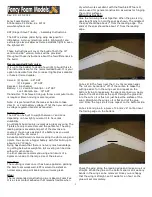
column. When the flaps are up return the lever to neutral.
(vi) Set mixture control to automatic rich.
ENGINE FAILURE DURING TAKE-OFF
10. If the engine should fail during take-off, put the nose of the machine
down and maintain flying speed. See that the undercarriage has commenced
to come up and, if possible, select the "DOWN" position on the flap lever
and give any possible assistance with the hand pump.
(i) Switch off and land straight ahead.
CLIMBING
11. Whilst climbing away, check cockpit instruments systematically.
(i) Best climbing speed up to 14,000 feet is approximately 150 m.p.h.
(ii) R.P.M. and boost as given in para. 27.
(iii) Mixture in automatic rich.
(iv) Radiator control adjusted to keep coolant temperature between 85°C
minimum and 12585°C maximum.
CRUISING
12. For high speed cruising the r.p.m. may be 2600, with manifold pressure
at 35 in. Hg. and mixture control in automatic rich.
For normal cruising the r.p.m. should be 2280 with manifold pressure at
27.9 in. Hg. and mixture control in Automatic Rich.
For most economical cruising, set revolutions to 2190 and manifold
pressure to 25.2 in. Hg. Switch propeller control from Automatic to Manual
and weaken mixture on mixture control until engine shows a drop in revs of
40 to 50 r.p.m. Switch propeller control back to Automatic. Provided no
change is made altitude or cruising conditions this will be most
economical condition.
GENERAL FLYING
13. Whilst this aircraft has a good view and is very maneuvreable, it is
directionally unstable, and this instability most pronounced with the
cockpit hood in the fully open position. It is necessary to use the rudder
on all turns and it is also necessary to readjust the rudder bias for all
changes of speed. As speed is increased the aircraft tends to yaw to the
right, and left rudder bias must be applied. (See para. 14)
The controls themselves are powerful at all speeds. It is possible to
obtain high acceleration loadings by coarse use of the elevators. Trimmer
tabs are effective.
INSTRUMENT FLYING
14. Owing to the directional instability of this aircraft with the hood
open, it is essential that the hood be shut before any blind flying is
attempted. It will be necessary to fly with the feet on the rudder bar,
and particular care must be taken to avoid yaw. It would be advisable to
lower the seat in order to obtain a better view of the instruments, which
are somewhat masked by the reflector sight bracket. [DF: The AVG Tomahawks
used a jury-rigged optical sight, and some had none at all.]
STALLING
15. The stalling characteristics of this aircraft are good. At minimum
speed the stall is gentle and there is some buffeting and pitching before
the wing, generally the right, drops gently, followed by the nose.
At high speed the machine can be stalled as a result of the coarse use of
the elevators producing high acceleration loadings, but due warning is
received, particularly on the high speed turn, by a shuddering of the
Summary of Contents for P-40 Tomahawk
Page 21: ......







































